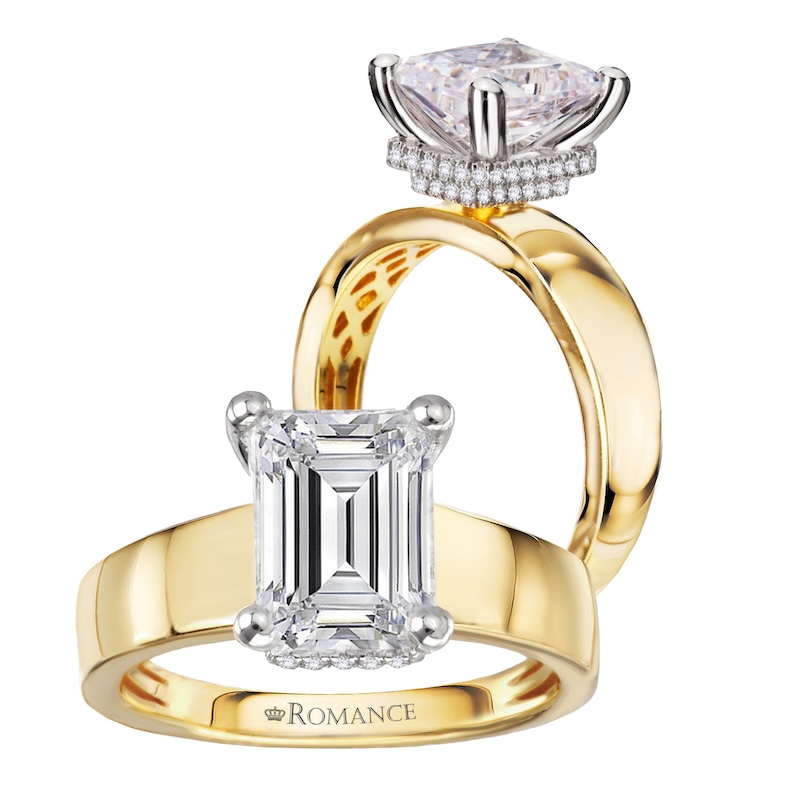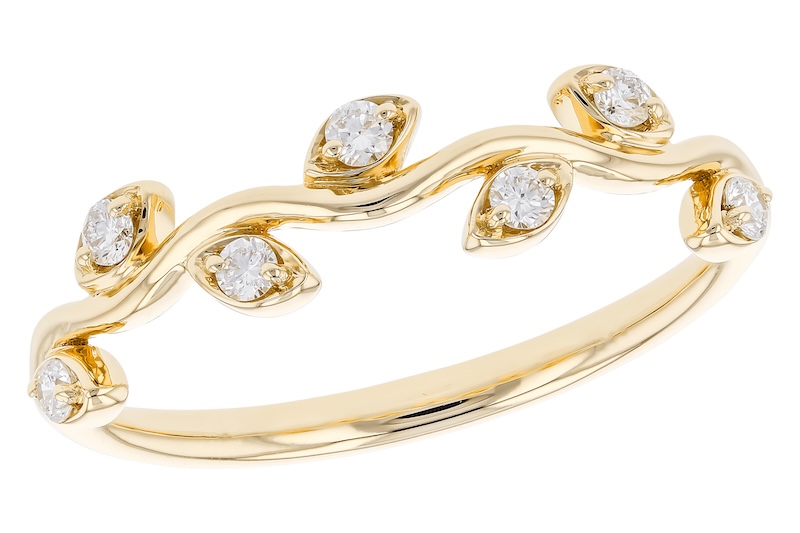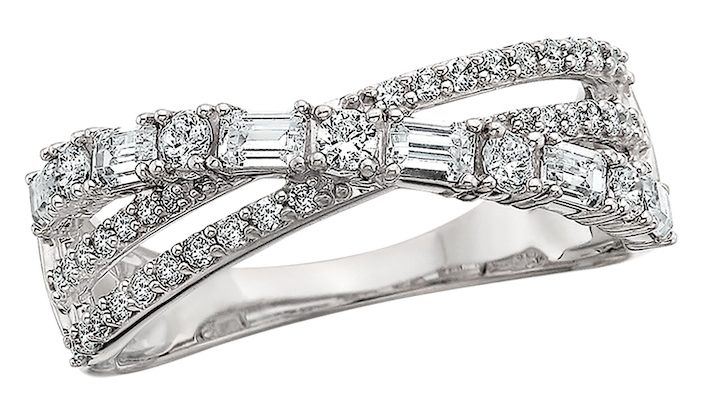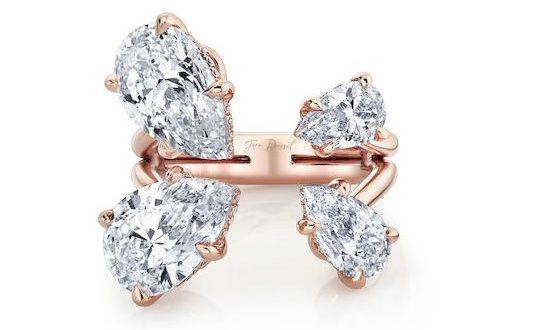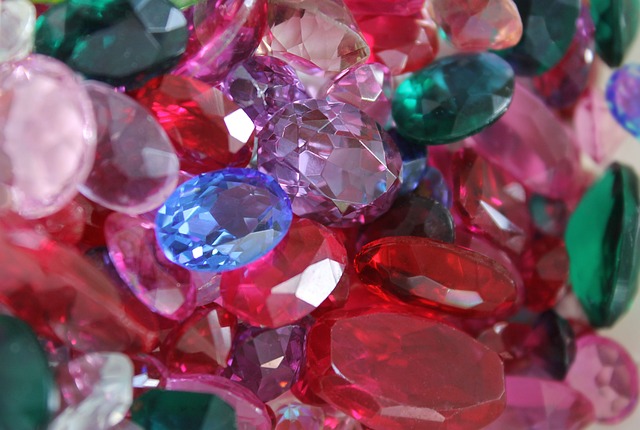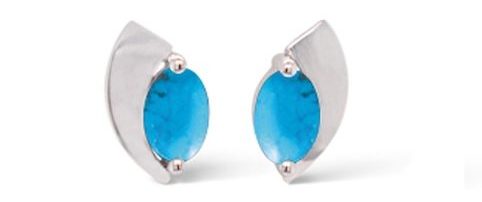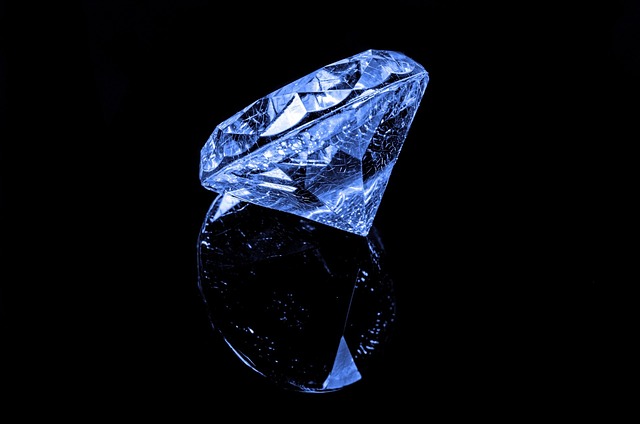Precious Metals, Precious Settings
Does the color of the metal matter when setting gemstones?
Gail Bonaparte
YELLOW GOLD
Few things have the strength and attributes that gold possesses. Even after thousands of years of being buried, archaeologists have uncovered gold treasure and artifacts that look almost new, keeping the original details and carvings intact. The same holds true for gold that has been underwater. The heft and feel of heavy metal gives any wearer the feeling of luxury and importance, often passed down from generation to generation. Gold’s luster is unequalled. Yellow gold is and will always be a popular choice of metal because it is luxurious and regal, without being high maintenance.
Gold is widely used in jewelry because it is malleable, meaning that it can be stretched in various forms: wire-thin jewelry, flat or hammered sheet metal, intricate and detailed designs, different texture finishes, heavy and chunky pieces, solid gold balls and even statutes. Gold can be manipulated into numerous shapes and will keep that shape because it is ductile, another reason why it makes an excellent choice for jewelry. It is especially suited for rings because gold is durable and it can take the wear and tear of daily wear, along with exposure to natural elements without corrosion.
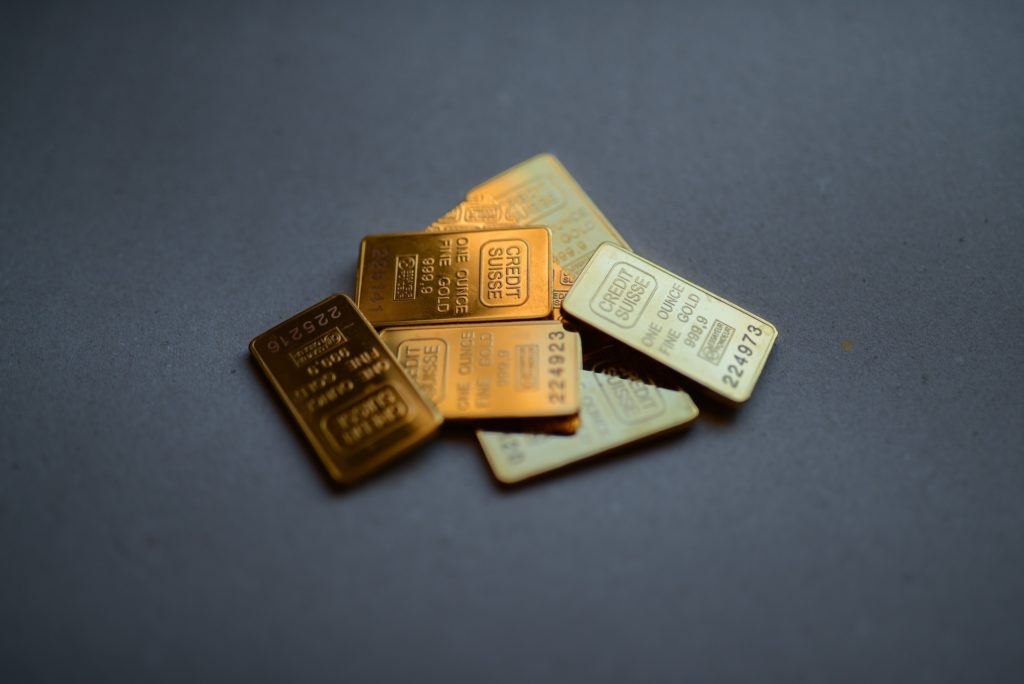
Kim International
Romance Collection
14k yellow gold emerald-cut
semi-mount with double-row
diamond hidden halo
MSRP $1,909
800.275.5555
The karat (k) of gold is based on the parts per thousand (ppt) of its purity and refers to the fineness of the gold. The gold karat differs from the diamond carat (ct), which refers to the diamond weight.
If the gold is 24k, then it would be described as 24 parts pure gold without any alloyed metals. The closer the karatage is to 24k gold, the richer the natural yellow gold color will be. The 24k is not often used as it is too soft to be widely used in commercial jewelry and it is expensive, whereas 18k, with a fineness of 750 ppt (18 parts gold and 6 parts of alloyed metals), is commonly used for engagement rings and luxury jewelry and is more affordable. For jewelry that can take a lot of wear and tear, 14k is recommended for its 14 parts gold and 10 parts of alloyed metals.
The warmth of yellow gold is a perfect setting for warmer colored gemstones. Gemstones are described by GIA standards in terms of Hue (the color) and saturation (intensity). Citrine, yellow and orange sapphires, spessartine garnet, and yellow beryl (Heliodor) can really shine like the sun when set with yellow gold prongs with a yellow gold basket underneath. Through years of experience, I have noticed this process often makes these gemstones look more saturated upon first impression and the color looks richer and evenly distributed.
First tip: Using yellow gold for the ring when setting engagement ring center diamonds, discuss with your customer the benefits of using white gold for the head and prongs to whiten up the appearance of the diamond. Especially for the D-H colors (including lab-grown diamonds), yellow gold prongs underneath a colorless to near colorless diamond could possibly reflect the yellow through appearance of the diamond. Of course, it is a personal preference, however, over 70% of customers that I explain this to agree to use the two-tone option. Show them a sample of a set ring completely in yellow gold and one yellow gold ring set with a white head and prongs so that they can make an informed visual decision
Allison-Kaufman Co.
14k yellow gold
ladies diamond ring .14 TW
MSRP $1,038
800.800.8908
Another tip: yellow center stone diamonds that did not make the color grade to qualify as “fancy yellow” can appear more richly saturated by adding a halo of smaller round yellow diamonds or yellow sapphires set in 18K yellow gold and a gold outline basket underneath. The yellow hue, or first initial color impression, can give the appearance of a fancy yellow diamond and save you the money that would have to be spent on a true fancy yellow diamond.
WHITE GOLD
Not only is white gold more malleable and easier to work with than platinum but it is also more affordable, making it a very popular alternative metal to platinum. White gold is usually achieved by alloying zinc, palladium, or nickel with gold. These white metals are necessary to make white gold, along with rhodium plating the white gold for added shine and a whiter appearance. Another advantage of rhodium plating is that rhodium is a hypoallergenic metal which means it is nickel free. One of the alloys used in white gold is nickel, which can cause some wearers to have an allergic reaction. The rhodium plating serves as a barrier between the item and the wearer, making it easier to wear and enjoy.
Jean Dousset
18k white gold Elle
cushion solitaire
lab diamond ring
MSRP $57,770
866.687.7136
Since gold naturally comes out of the ground yellow, white gold slowly reverts over time and I always suggest polishing and rhodium plating your white gold again every 12-18 months to keep it looking exactly like the day that the jewelry was purchased. If you have 18K white gold jewelry, you might be able to stretch the rhodium plating once every 2 years. The rhodium plating may last even longer if the jewelry is not worn when cooking, cleaning, exposure to chemicals (especially chlorine and bleach), lotions, or hairspray.
Another advantage of rhodium plating is that rhodium is a hypoallergenic metal which means it is nickel free. One of the alloys used in white gold is nickel, which can cause some wearers to have an allergic reaction. The rhodium plating serves as a barrier between the item and the wearer, making it easier to wear and enjoy.
ROSE GOLD
Jean Dousset
18k rose gold pear
cut four stone matching
lab diamond ring
MSRP $25,000
866.687.7136
If you have a diamond that is J, K, or even L in color, try setting it in rose gold with rose gold prongs, versus white gold or platinum. You might be surprised by how much better these J-L colored diamonds appear when the rose gold reflects through the transparent diamond and the rosy color modifies some of the yellow in these particular-colored diamonds. Pink sapphires, rubellite, and pink tourmaline are all breathtaking setin rose gold.
One of my favorite colors of gold is rose gold. It looks great on any complexion and skin tone, and I like to think of it as my gold is blushing from all the compliments received when it is worn. How does rose gold blush? This alluring color of rose gold (aka pink gold) is made by alloying a greater percentage of copper to the gold. The varying intensities of rose gold can be a closely guarded secret by manufacturers and jewelry houses.
Jean Dousset
18k rose gold pink and colorless
radiant cut two stone lab
diamond ring
MSRP $77,100
866.687.7136
GREEN GOLD
BLUE GOLD
Would you be bold enough to wear blue gold? That can be made by mixing gold with indium, an intermetallic compound. Blue gold is a defi nite conversation starter so don’t be shy when you wear it.
BLACK GOLD
Edgy and sophisticated with a rock & roll vibe, black gold is eye-catching. It is unconventional, yet beautifully dark and sleek. Many will admire black gold but might never own it because it is way out of their comfort zone. It doesn’t conform to the usual standards, and you have to be somewhat daring to confi dently pull off this look because people might not even think it is real gold. Black gold is made by adding cobalt and plating with black rhodium or ruthenium.
Black gold brings out the richer gemstone hues and adds unparalleled depth to the colors of emeralds, blue sapphires, brown- and champagne-colored diamonds. Black gold looks particularly stunning with champagne diamonds or brown gemstones and provides the perfect background contrast for colorless diamonds.
SILVER
Silver is bright white with an unmatched luster, and it has the highest electrical conductivity of any of the metals. Silver is soft, ductile (can be stretched and pulled without breaking, even at cooler temperatures), and malleable. Silver is not only valuable, it is slightly harder than gold and has the highest electrical conductivity of any of the metals, with copper’s electrical conductivity coming in at a close second. Sterling silver is the most popular silver alloy in the world and is usually identified with the stamp .925(consisting of 92.5% fine silver and 7.5% base alloys – typically copper).
Joryel Vera Collections
Sterling silver & turquoise
sculptured earrings
MSRP $130
561.508.2945
E.L. Designs
Sterling silver with 14k
bezel, 6mm blue topaz,
1.3mm wheat chain
MSRP $510
800.828.1122
Silver has many different uses but when used for jewelry, the base alloys are necessary to help easily shape and mold the silver into different shapes and forms. Because of its strength and durability, jewelry designers and manufacturers use sterling silver as an alternative to white gold because it has a similar look at a fraction of the cost. In times past, silver jewelry was set with semi-precious gemstones (quartz, topaz, and opaque gemstones like turquoise, malachite, and sliced agate) but in recent years, designers use silver set with precious gemstones and diamonds.
Although silver is a naturally white metal, rhodium is often added to help reduce tarnishing. Silver can be very high maintenance and require that it is polished often. Silver is stable in oxygen and water, but tarnishes (turns black) when exposed to sulfur compounds in air or water. The use of silver jewelry cleaning cloths, a tarnish-free jewelry box or tarnish prevention pouches/bags can be used to reduce tarnishing.
PLATINUM
Last but certainly not least is platinum. Hypoallergenic and an excellent choice for those with a gold and/or nickel allergy. Silvery white in color, atomic number 78, the appearance can be mistaken for silver. The heaviest of the noble metals, platinum is impervious to corrosion and does not tarnish in moist air like Silver. Platinum is often associated as the next level up from gold in everyday life (e.g., platinum records and platinum credit cards). This is one of my favorite metals and the inspiration for this “Precious Metals” article. The cool feel of platinum is like no other metal.At almost 30 times rarer than gold, platinum is denser and heavier than gold and weighs almost twice as much, making it one of the most notable differences between the two metals.
Platinum is a very personal choice that is often made based on budget and lifestyle. Visually, it looks like white gold but the heavy feel on the hand is quite different from gold and unmistakable. It will not change color when worn, as its color stays true white from the inside out and pure to its core. Perhaps this is why many consider it the perfect symbol of pure and everlasting love.
Jean Dousset/High Jewelry
Platinum eternity band with
15.35 ct oval lab diamonds
MSRP $28,000
866.687.7136
This stark white metal also allows your white sapphire or high-quality colorless diamonds to show at their best advantage by highlighting the transparency, sparkle, and brilliance. Due to platinum’s luxury pricing, it is often set with higher-priced and higher-quality gemstones. Rubies are often set in platinum and yellow gold because they come in orange red and purplish red. Blue, padparadscha, and other colored sapphires, emeralds, alexandrites, Tanzanites, spinels, and Paraiba tourmaline.
The vast majority of colored and colorless gemstones look fabulous surrounded by platinum. Platinum is more expensive than gold and for good reasons: (1) It has a higher melting temperature than gold and requires a different setup for smelting and refi ning in order to work with it for jewelry (2) platinum’s physical properties make it more challenging to work with when manufacturing jewelry (3) and its rarity in comparison to gold. Like gold, platinum is also alloyed with other metals (ruthenium or iridium or even cobalt) to make it harder than platinum is on its own. The patina of platinum is slightly greyish and is often plated with rhodium to give it a brighter, whiter fi nish that makes it diffi cult to differentiate from white gold. This is why knowing the heft of platinum versus gold is important.
*Reference 1/30/19 NightinGail18 Instagram article series “Heavy Metals”

